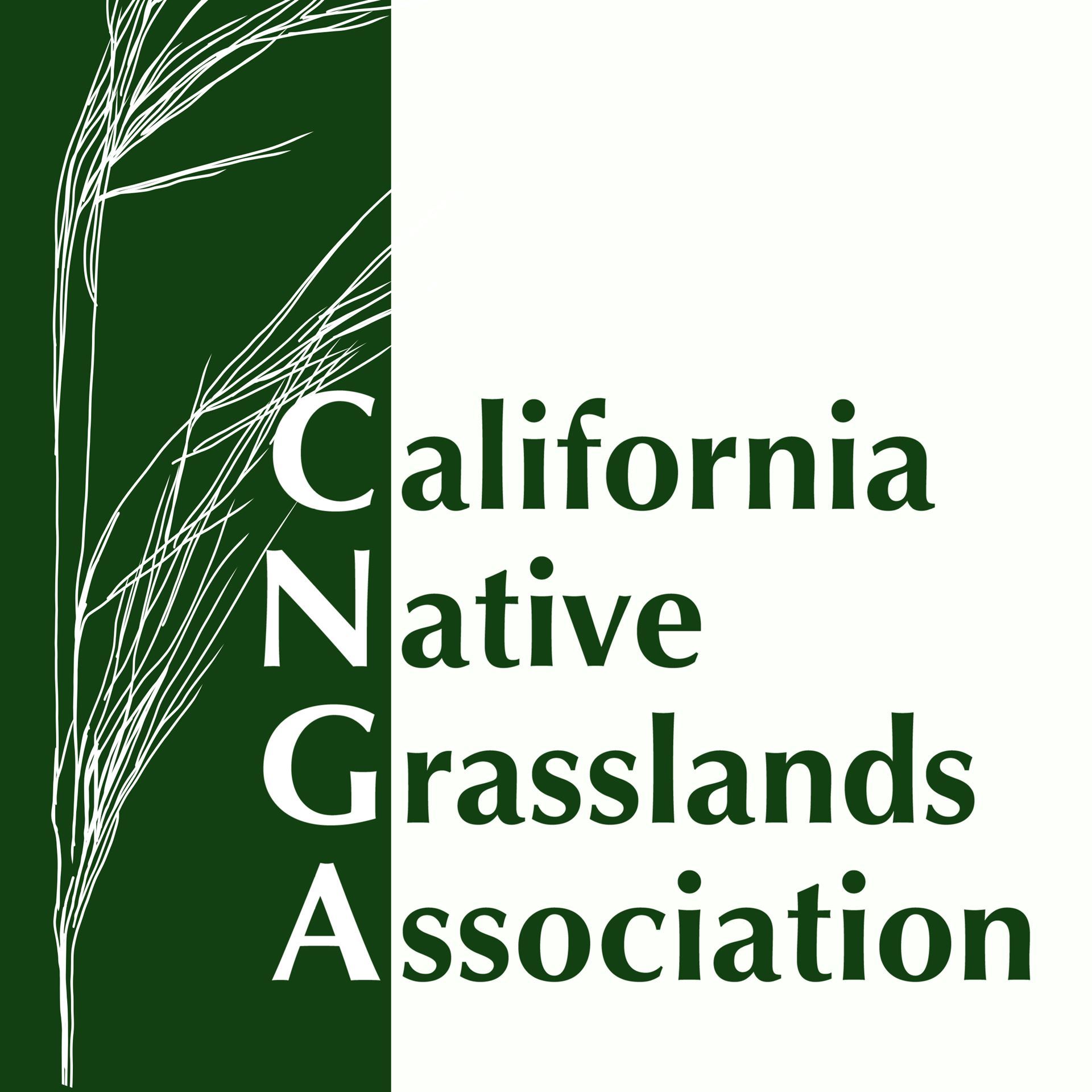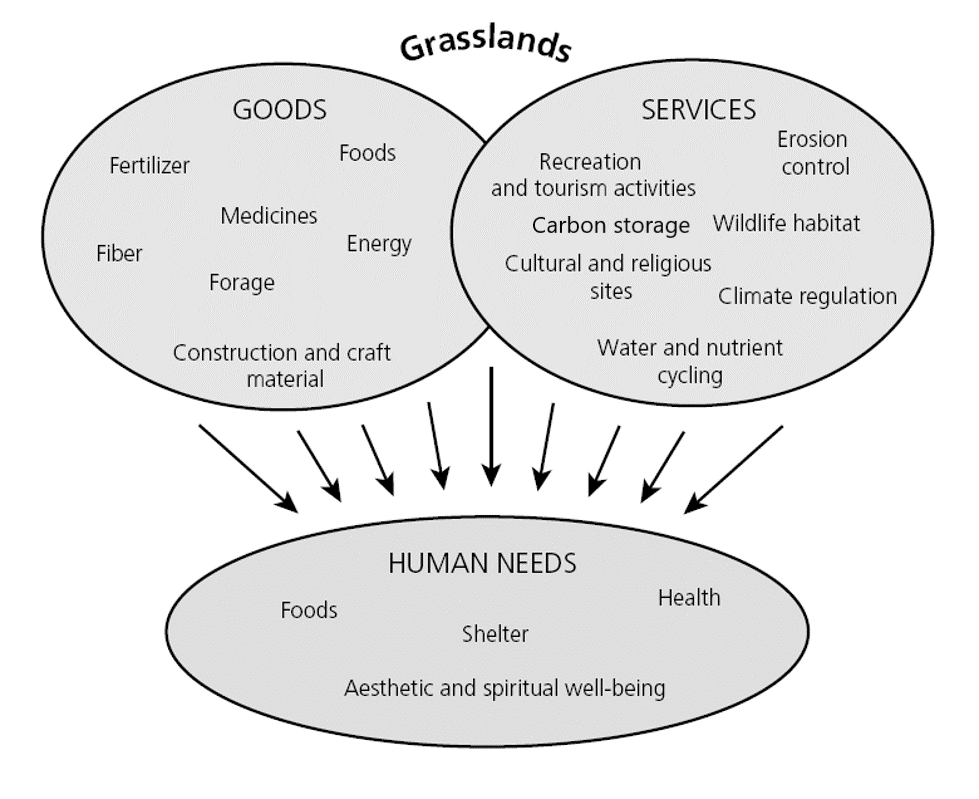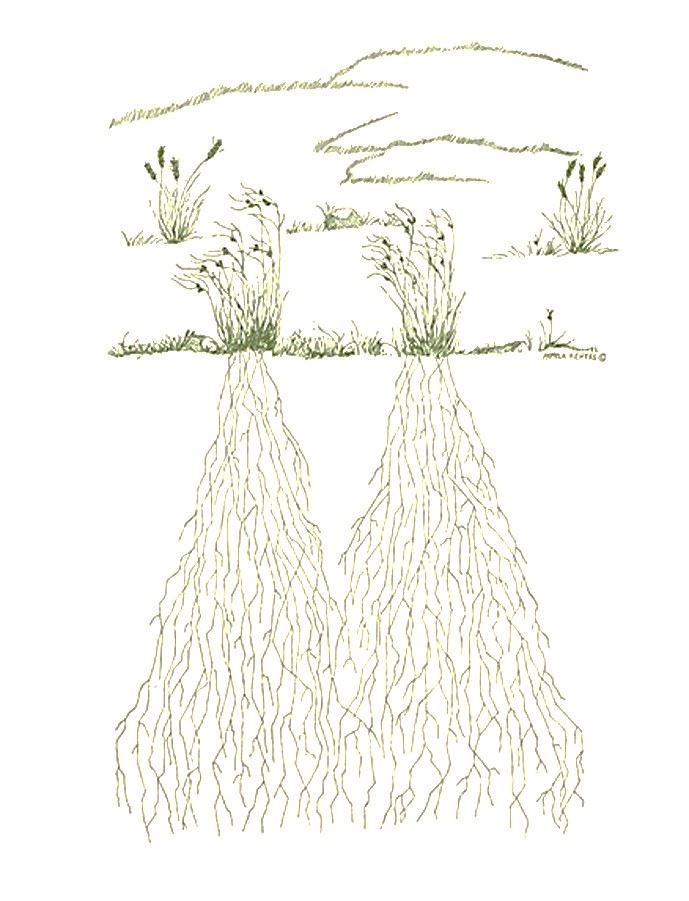
The Only Organization Working Exclusively to Conserve and Restore
California's Native Grasslands
Grassland FactsGrasslands Provide Resilience in a Changing World |
Modified from: White R, Murray S, Rohweder M. 2000. Pilot analysis of global ecosystems: grassland ecosystems. World Resources Institute. Washington DC. 69pp. Also available at: <http://www.wri.org/publication/pilot-analysis-global-ecosystems-grassland-ecosystems>. Modified from Campbell et al 1996:3. Accessed 2011 Jan 23. |
Healthy, functioning grasslands are essential for human well-being providing benefits that extend to local, regional, and global communities. |
Food and Agriculture: Humans owe the development of our civilization to grasslands, which are the source of species that are staples in our diet, and enabled the development of agriculture and domestication of livestock.
| Pasturage: Many of California’s native grasses are considered excellent forage and continued to be so after reportedly over 100 years of grazing use.
|
Carbon Storage: Grasses have an enormous capacity for carbon storage. Grasslands remove more carbon from the atmosphere than any other ecosystem in America.
Research Article: Grasslands more reliable carbon sink than trees.Dass, Pawlok, Benjanim Z Houlton, Yingping Want and David Warlind. 2018. Environmental Research Letters, Volume 13, Number 7. Link to PDF |
Water Quality:Deep-rooted perennial native grasses capture, filter and store water. They anchor the soil in place throughout the year long after annuals die. Flooding & Erosion Prevention: Grasslands soak up rain and flood water like giant sponges helping to reduce flooding and erosion.
|
|
Biodiversity: California’s relatively intact grasslands are reservoirs of biodiversity. Grassland birds, mammals, reptiles, insects, pollinators and other animals depend on the resources these plants and spaces provide.
|
|
Aesthetics and Recreation: Grasslands provide sweeping views, gorgeous wildflower displays, and wonderful hiking opportunities.
|
References are from Stomberg MR, Corbin JD, and D'Antonio CM. 2007. California Grasslands: Ecology and Management, University of California Press, unless otherwise noted.
CNGA's Mission
To promote, preserve, and restore the diversity of California's native grasses and grassland ecosystems through education, advocacy, research, and stewardship.

